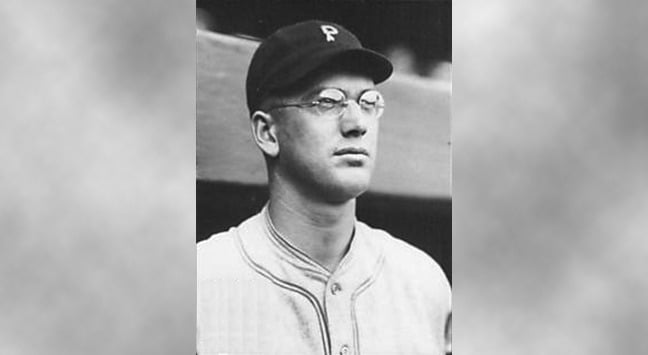
North State Journal’s 100 in 100 series will showcase the best athlete from each of North Carolina’s 100 counties. From Alamance to Yancey, each county will feature one athlete who stands above the rest. Some will be obvious choices, others controversial, but all of our choices are worthy of being recognized for their accomplishments — from the diamond and gridiron to racing ovals and the squared circle. You can see all the profiles as they’re unveiled here.

Granville County
Lee “Specs” Meadows
The son of an Oxford tobacco buyer, Meadows gained instant notoriety when he made his major league debut for the St. Louis Cardinals on April 19, 1915.
But it wasn’t because of his pitching prowess.
Rather, it was because the 20-year-old right-hander was wearing glasses, a rarity at the time that led to his nickname of “Specs.” According to research by the Society for American Baseball Research, he was the first National Leaguer to wear corrective lenses while playing in a game.
“I have worn glasses ever since I was six years old,” he told sportswriter Ward Mason in a story titled “An Eyeglassed Athlete” in the March 1916 issue of Baseball Magazine, “and ever since I can remember I wanted to be a professional ball player.”
Despite the focus on his eyewear, Meadows was much more than a curiosity item.
He won 188 games with an earned run average of 3.37 and more than 1,000 strikeouts in his 15 seasons with the Cardinals, Philadelphia Phillies and Pittsburgh Pirates. He pitched 25 career shutouts, including a one-hitter against the Cincinnati Reds on July 2, 1915, and led the National League in wins in 1926, going 20-9.
In the previous season, 1925, Meadows won 19 times and started Game 1 of the World Series against Hall of Famer Walter Johnson. Although his Pirates lost 4-1, they rallied to win the Series in seven games. He also won 19 and pitched in the 1927 World Series against the New York Yankees, a team that featured Babe Ruth and Lou Gehrig and is considered by many to be the best in major league history.
Just two years later, he was out of baseball because of an arm injury that ended his career at the age of 33. His .629 winning percentage with Pittsburgh (88-52) still ranks as the sixth-best in franchise history.



